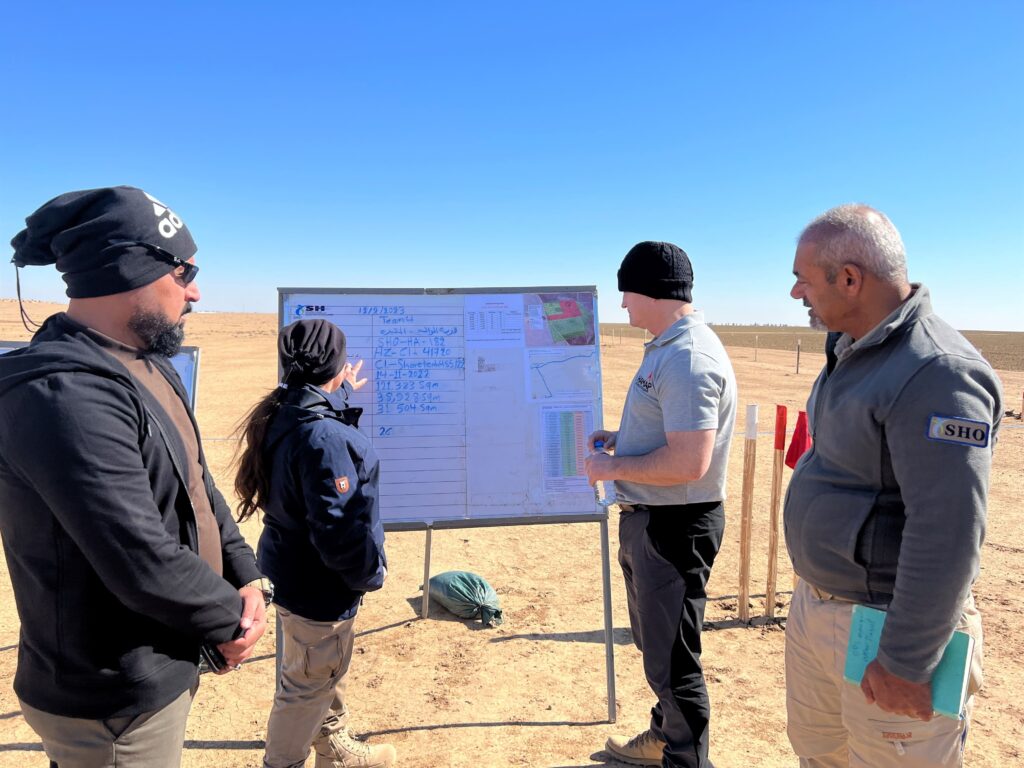Project for a Safer Sinjar
Sinjar is in the west of Ninewa governorate and borders northeastern Syria to the west and the Kurdistan region to the northeast. Its strategic geopolitical position has made it very vulnerable since the fall of Saddam Hussein’s regime in 2003, and many changes of power have occurred there. As a result, its position has made it an area that has experienced years of conflict, resulting in significant displacement of its original population as well as significant contamination by explosive devices.
The Sinjar district was once inhabited by more than 500,000 people belonging to various religious and ethnic groups; nevertheless, the district is well known as the homeland predominantly dominated by the Yezidis. The Yezidis are among the oldest populations in Mesopotamia, where their belief originated over four thousand years ago. A historically misunderstood group, the Yezidis are primarily ethnic Kurds and have maintained their syncretic religion for centuries, despite many years of oppression and threats of extermination. In fact, since the beginning of time, other religions have misinterpreted their worship. In fact, the Yezidis were denounced as infidels by Al-Qaeda in Iraq, the predecessor of the Islamic State in Iraq and the Levant (ISIS), which endorsed their indiscriminate massacre.

Indeed, on August 3, 2014, the Islamic State conquered Sinjar and launched mass murder campaigns against the left-behind Yezidis. Most of the inhabitants fled to escape the Islamic State and those who remained were killed or enslaved. According to UN estimates, more than 5,000 men have been killed in severe massacres and 7,000 women and girls have been forced into sexual slavery, not to mention the 3,000 girls, women, and children who are missing, as reported by the Kurdistan Regional Government’s Ministry of Awqaf and Religious Affairs’ Yezidi Affairs Department in November 2018.
The years of conflict in Iraq have resulted in important displacement. At the height of the crisis in March 2016, the number of internally displaced persons reached nearly 3.5 million, many of whom were relocated to internal displaced persons’ camps. During the summer of 2017, many internal displaced persons decided to register for voluntary return to their homeland, but this trend gradually slowed during the summer of 2018. Subsequently, in October 2020 and January 2021, 14 internal displaced persons’ camps located in federal Iraq were closed by government decision. According to the Office for the Coordination of Humanitarian Affairs (OCHA) Humanitarian Needs Overview Iraq report published in February 2021, 65,000 internally displaced persons left the camps between August 2020 and January 2021 as a result.
The decision of the Iraqi federal government to close the camps has not been followed by the Kurdistan Regional Government (KRG). There are still 25 camps housing a total of more than 180,000 internally displaced persons. Most of the camps in Dohuk governorate are occupied by Yezidis from Sinjar district. Northern Sinjar district and Sinjar town were liberated from the Islamic State in 2015, with southern Sinjar Mountain liberated in April 2017. However, the majority of the 500,000 Yezidis displaced from the 2014 attacks have still not returned home. Many indeed do not want to return to Sinjar.

Destroyed market area of Sinjar city (Andrea DiCenzo for NPR)
This can be explained by the lack of basic services, fragile security, and political instability there.
Since the liberation of Sinjar from ISIS in 2015, many international and local NGOs have expanded their humanitarian efforts there to meet the needs.
Land contamination from explosive devices in Sinjar is one of the main consequences of the years of conflict, and still causes severe socio-economic consequences for the people of Sinjar who stayed or returned, but also prevents those still displaced from returning. Indeed, beyond the physical and psychological consequences caused by the accidents, the presence of the explosive devices hinders the possibilities of a recovery of the economy, which was strongly based on agriculture, which would allow for better life prospects upon return.
In response, HAMAP-Humanitaire and its partner SHO have launched a mine action initiative in the region since August 2021. This project aims to educate the population of Sinjar about the dangers of explosive devices, to clear contaminated land, while strengthening the capacities of our local partner SHO.


